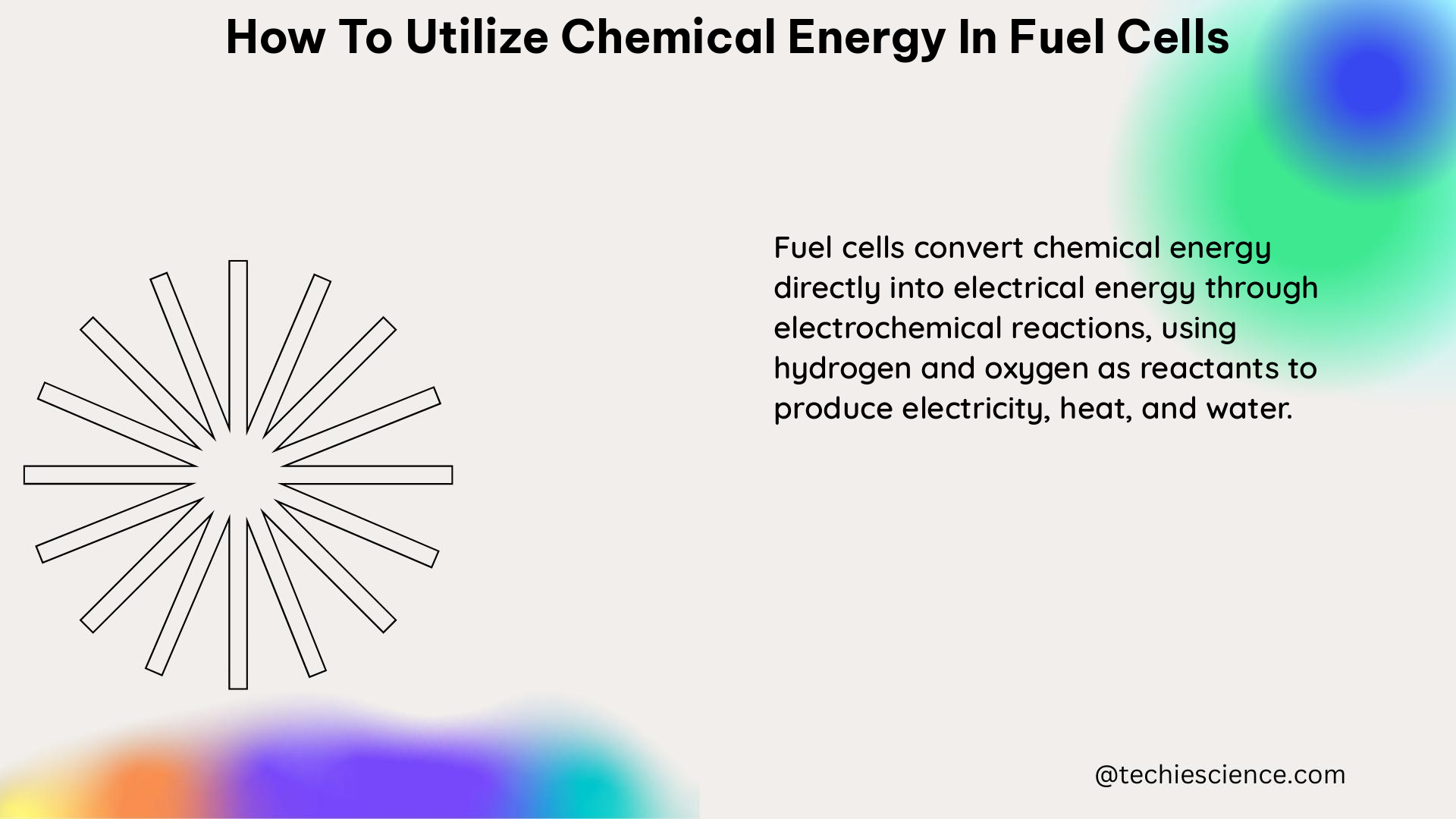Fuel cells are electrochemical devices that convert the chemical energy of fuels, such as hydrogen, methanol, or natural gas, directly into electrical energy through a series of complex electrochemical reactions. Understanding the principles behind the utilization of chemical energy in fuel cells is crucial for optimizing their performance, efficiency, and cost-effectiveness. This comprehensive guide will delve into the fundamental concepts, theoretical calculations, and research and development efforts to help you navigate the intricacies of harnessing chemical energy in fuel cells.
Fundamental Principles of Fuel Cell Operation
The underlying principle of fuel cell operation is the conversion of chemical energy into electrical energy through electrochemical reactions. This process involves the oxidation of a fuel (typically hydrogen) at the anode and the reduction of an oxidant (usually oxygen) at the cathode, with the flow of electrons between the two electrodes generating an electric current.
The efficiency of this process is determined by the Gibbs free energy (∆G) and enthalpy (∆H) of the system and fuel, as described by the following formula:
η_th(max) = ∆G/∆H
For a hydrogen-fueled system, the standard free energy change is typically calculated from the reaction of gaseous hydrogen to form liquid water:
H₂(g) + 1/2O₂ → H₂O(l)
At room temperature, the chemical energy of the system (∆H) is 285.8 kJ/mole, and the free energy for useful work (∆G) is 237.1 kJ/mol. The thermal efficiency of an ideal fuel cell operating reversibly on pure hydrogen and oxygen at standard conditions would be:
η_th = ∆G/∆H = 237.1/285.8 = 0.83 or 83%
Calculating Fuel Cell Efficiency

The efficiency of a real operating fuel cell is calculated from the actual voltage of the cell compared to the ideal (reversible) voltage. The ideal voltage of an H₂/O₂ fuel cell under no load at room temperature and pressure is 1.229 V when the product is liquid water (with a higher heating value [HHV]) and 1.18 V when the product is gaseous water (with a lower heating value [LHV]).
The thermal efficiency of a fuel cell operating at a voltage V_a at room temperature and utilizing all of the fuel can be calculated using the equation:
η_th = 0.83 × V_a/1.229
For example, a fuel cell that produces liquid water and operates at 0.8 V has an ideal thermal efficiency of 54%, while a fuel cell operating at 0.6 V has an efficiency of 40%.
However, practical fuel cells do not usually consume all of the fuel supplied, and some leaves the system unreacted. This unreacted fuel needs to be taken into account in the efficiency calculation. The overall thermal efficiency would then be:
η_th = V_a/1.229 × U × ∆G/∆H
where U is the fraction of the fuel utilized electrochemically.
Solid Oxide Fuel Cells (SOFCs)
For solid oxide fuel cells (SOFCs) running on a hydrocarbon fuel, the parameters must be adjusted for temperature and the reactions for hydrocarbon oxidation. The ideal cell voltage of SOFCs is lower than that of proton exchange membrane (PEM) systems because voltage decreases with increasing temperature, but the LHV of gaseous water (1.18 V) improves the theoretical cell efficiency.
Fuel Cell Efficiency Limitations
Fuel cells do not achieve their theoretical efficiency because of several factors, including:
- Ohmic losses: Resistance to the flow of ions through the electrolyte and electrons through the electrodes and interconnects, leading to voltage drops.
- Activation losses: Slowness of the reactions taking place on the surface of the electrodes, resulting in voltage drops.
- Concentration losses: Depletion of reactants (fuel and oxidant) at the electrode-electrolyte interfaces, leading to voltage drops.
Research and Development Efforts
The U.S. Department of Energy (DOE) is actively working with national laboratories, universities, and industry partners to address the critical technical barriers to fuel cell development. The key focus areas include:
- Cost Reduction:
- Developing low-cost fuel cell stack and balance of plant (BOP) components
- Advancing high-volume manufacturing approaches to reduce overall system cost
-
Reducing the content of platinum group metal (PGM) and PGM-alloy catalysts, as well as exploring PGM-free catalyst approaches
-
Performance Improvement:
- Developing ion-exchange membrane electrolytes with enhanced efficiency and durability at reduced cost
- Improving membrane electrode assemblies (MEAs) with high power density
- Modeling to understand system design and operating conditions
-
Developing stacks with high efficiency at rated power and high-performing BOP components
-
Durability Enhancement:
- Identifying and understanding fuel cell degradation mechanisms
- Developing materials and strategies to mitigate the effects of degradation
- Achieving targeted lifetimes for various fuel cell applications (8,000 hours for light-duty vehicles, 30,000 hours for heavy-duty trucks, and 80,000 hours for distributed power systems)
By addressing these key challenges, the fuel cell industry aims to improve the overall efficiency, cost-effectiveness, and reliability of fuel cell systems, paving the way for their widespread adoption in various applications, from transportation to stationary power generation.
References

The lambdageeks.com Core SME Team is a group of experienced subject matter experts from diverse scientific and technical fields including Physics, Chemistry, Technology,Electronics & Electrical Engineering, Automotive, Mechanical Engineering. Our team collaborates to create high-quality, well-researched articles on a wide range of science and technology topics for the lambdageeks.com website.
All Our Senior SME are having more than 7 Years of experience in the respective fields . They are either Working Industry Professionals or assocaited With different Universities. Refer Our Authors Page to get to know About our Core SMEs.